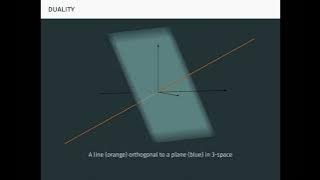Covector mapping principle
The covector mapping principle is a special case of Riesz' representation theorem, which is a fundamental theorem in functional analysis. The name was coined by Ross and co-workers, It provides conditions under which dualization can be commuted with discretization in the case of computational optimal control. (Wikipedia).




















